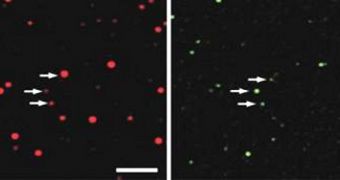Scientists at the University of Copenhagen have recently been able to gain new insight into the mystery that surrounds the methods nerve cells use to communicate with each other. This type of interaction between neurons and axons is crucial for the human body. Electrical signals sent by the brain travel along these nerve fibers, and then make their way to the arms, legs, or wherever they need to go, causing the muscles to react and contract, producing movement, speech and a host of other phenomena.
A huge role in this communication process is played by neurotransmitters, which are essentially chemicals stored inside small structures called vesicles. These substances play an incredibly huge part in our nerve cells' abilities to relay electrical impulses. When an electrical potential difference reaches the end of one neuron, and needs to pass to the other cell in line, vesicles separate from the former, and travel through the inter-neuronal space to the other, where they fuse with its axon or dendrite. Once this happens, the electrical signals are passed on, and the process repeats itself until the impulse reaches its destination. All of these events happen several times per second.
Malfunctions in this terribly complex system lead to peculiar conditions such as phantom pains. These happen most often in the case of amputee victims, who have lost an arm or a leg. They continue to feel pain in the missing limb, but this is caused by misfires in the severed neural network. Vesicles in these regions are constantly being made, which is precisely the way things should be.
“In patients with nerve pain, part of the pathological picture is a defect in a protein domain we call BAR. We have studied how BAR binds to small membrane vesicles of different size. We expect that the new knowledge can be used to combat nerve pain in the future,” UC expert Dimitrios Stamou, who is an associate professor at the university's Bio-Nanotechnology Laboratory, explains. He also holds appointments in the Nano-Science Center and the Department of Neuroscience and Pharmacology at UC.
“We have used nanotechnology techniques, which give us the unique opportunity to study the binding of proteins to individual vesicles. Earlier studies have been performed in solutions where you measure a large number of vesicles and proteins at a time. This gives an average value of binding and 'masks out' a large number of important information that we can retrieve by measurements on single vesicles,” the expert adds.

 14 DAY TRIAL //
14 DAY TRIAL //